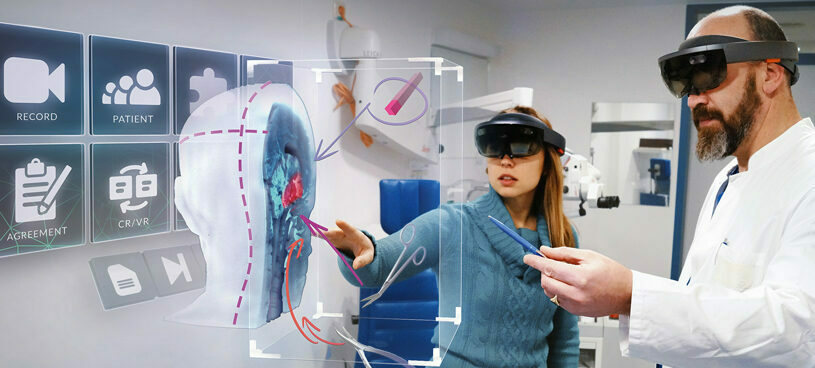Industry Trend Report|Inventory of domestic and foreign companies, where are the business opportunities for meta-universe medical applications?
Overseas manufacturers are developing both surgical and online digital therapies.
Based on the list of FDA-approved VR/AR medical devices (Table 1 for details), there are several current directions:
- As the earliest FDA-approved medical AR medical device, Microsoft's penetrating head-mounted display, HoloLens, has taken the lead in surgical operations through SLAM 3D positioning technology, and extensive cooperation with surgical medical device manufacturers, medical units, academic units and governmental units to build ecosystems, including surgical device manufacturers Stryker, Zimmer, Johnson & Johnson and radiology imaging equipment manufacturer Siemens have adopted Microsoft HoloLens as a 3D assistive device for surgical operations. The company has already achieved a leading position in surgical procedures, including surgical material manufacturers Stryker, Zimmer, Johnson & Johnson and radiology imaging equipment manufacturer Siemens have adopted Microsoft HoloLens as a 3D assistive device for surgical procedures. Microsoft's business direction in the meta-universe has shifted from an early focus on consumers to enterprise users in the medical and manufacturing industries, and the recent closure of Microsoft's HelathVault personal healthcare service can already be seen in the direction of the strategy towards enterprise users and the degree of acceptance.
- Companies using head-mounted displays (mostly using Meta Oculus) mostly use VR technology to conduct chronic rehabilitation therapy using game therapy, the more famous companies include XRhealth and Pear Therapeutics, and more recently there is Applied VR applied to chronic lower back pain relief product RelieVR, this field manufacturers are gradually branching out. This field is gradually branching out into digital therapies (Dx) and acquiring the status of medical prescriptions. These companies are cooperating with virtual hospitals in Israel, Arabia, the United Kingdom, and the United States to provide online virtual integrated healthcare.
- Pre-operative planning simulation and intra-operative navigation have been marketed in hard tissue (orthopedics and dentistry), and have recently been extended to laparoscopy, neurosurgery, craniomaxillofacial surgery, cardiac surgery, and the medical aesthetic industry.
- Surgical robotics and radiology equipment manufacturers have also chosen to invest in surgical navigation and positioning technologies. For example, surgical equipment manufacturer Medtronic has chosen to partner with Surgical Theatre to develop SyncAR, a VR surgical simulation system for use with its own machines, and Zimmer Biomet has acquired OptiVu Mixed Reality. Siemens develops Cinematic Rendering system for advanced radiotherapy positioning. Philips announced the expansion of its AR surgical navigation ClarifEye pilot at the end of 2021.For more details, please register or log in.Member Login.










